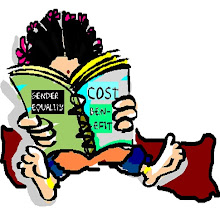 An Indian with a sense of belonging to India but can I take away the cynicism that I have about so many things in India? No, perhaps that is also a trait of a typical Indian – the Argumentative Indian, as Amartya Sen puts it. The cynicism of the day is the caste factor in the intercaste marriages in India. A large number of upwardly mobile urban-dwelling people, except those who are on the right to the centre in their ideologies, believe that with India’s economic growth and development a few changes will happen automatically. These ‘foreseen’ automatic changes include decline of the caste system, the end of women’s subjugation, and consequently, of the practice of dowry. It is believed that women’s migration from unpaid care work and unorganized sector to paid employment and organized sector would push the way towards the end of dowry as an institutionalised practice. The fact is that from being a practice of a select few castes in some regions of India, the practice of dowry has now spread to almost all castes and regions in India, including amidst all major religions. This is despite the fact that women’s participation in the labour force and their contribution in cash to household monthly income has grown.
An Indian with a sense of belonging to India but can I take away the cynicism that I have about so many things in India? No, perhaps that is also a trait of a typical Indian – the Argumentative Indian, as Amartya Sen puts it. The cynicism of the day is the caste factor in the intercaste marriages in India. A large number of upwardly mobile urban-dwelling people, except those who are on the right to the centre in their ideologies, believe that with India’s economic growth and development a few changes will happen automatically. These ‘foreseen’ automatic changes include decline of the caste system, the end of women’s subjugation, and consequently, of the practice of dowry. It is believed that women’s migration from unpaid care work and unorganized sector to paid employment and organized sector would push the way towards the end of dowry as an institutionalised practice. The fact is that from being a practice of a select few castes in some regions of India, the practice of dowry has now spread to almost all castes and regions in India, including amidst all major religions. This is despite the fact that women’s participation in the labour force and their contribution in cash to household monthly income has grown.Similarly, it is believed that when intercaste marriages take place, they lead to erosion of the caste system. Is it really so? The answer is not a complete yes or no. There is erosion, of the woman’s caste, in most cases that I know of. But even when the man’s caste does not really gain or lose a caste-conscious member in its fold, it often gains a new practitioner of its values. It is similar to what happens in many inter-religious marriages. So unlike the practice of dowry, where there is a distinct growth in the practice, in case of caste, the growth in much more understated. This is mainly due to the prevalence of patriarchy. Women upon marrying a man from another caste, take upon the man’s surname, his family practices, his family’s language, and his family’s values. They may or may not give up their own but they tend to assimilate into the new. In keeping with the patriarchal tradition, children of such marriages take on the caste of the father. So while there may not exist an overt caste affiliation, the practices and values of caste are passed on and inherited. The same applies to inter-religious marriages, where children are treated as being born into the father's religion.
The manifestation of patriarchy's influence is not limited only to the practices of dowry and intercaste or inter-religious marriages. Patriarchy combined with the ‘caste power’ also takes all those – women and men – who do not belong to politically identified religions or are agnostic to be Hindus. So applying Hindu identity and upper caste practices to abandoned and orphan children in the institutional care, abandoned or unknown dead, believers in animism with or without a label of religion, etc are common.
In sum, if caste and practices like dowry are to be done away with, the practices of patriarchy must change.









.JPG)


.JPG)



